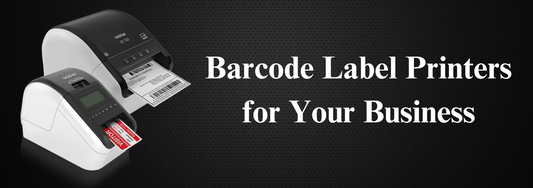In today’s globalized economy, logistics has become a major focus of efficiency and profitability, often called the “third source of profit” for enterprises. Warehousing, as both a foundation of traditional logistics and an essential part of modern logistics, plays a critical role in the flow of goods. Because storage costs form a large share of overall distribution costs, improving warehouse management directly contributes to reducing operational expenses and increasing competitiveness.
Barcode technology has become a key enabler in this transformation. It helps automate manual operations, increase accuracy, and streamline the entire warehouse process from receiving to dispatching.
The Shift from Traditional to Modern Warehousing
With rapid economic development and increasingly diverse customer demands, the production model has shifted from large-scale uniform manufacturing to multi-variety, small-batch production. This change requires logistics systems to respond with higher flexibility, accuracy, and speed.
Traditional warehouse operations rely heavily on manual entry and paperwork, which makes them prone to inefficiencies and human error. Common challenges include unstructured inventory layouts, slow processing speeds, and poor visibility into stock levels.
| Traditional Warehousing | Modern Barcode-Based Warehousing |
|---|---|
| Manual data entry and paperwork | Automated data capture through barcode scanning |
| Frequent inventory discrepancies | Real-time visibility and accuracy |
| High labor intensity | Reduced manual workload |
| High operational costs | Lower management and error-related costs |
| Slow processing speed | Rapid, real-time data updates |
These challenges have prompted many enterprises to adopt barcode-based Warehouse Management Systems (WMS), which introduce automation, digitalization, and precision into every step of warehouse operations.
Advantages of Barcode-Based Warehouse Management
A modern WMS integrates barcode scanning with intelligent software to handle receiving, storage, inventory control, order fulfillment, and shipping. This allows warehouses to operate faster and more efficiently while minimizing human errors.
| Benefit Area | Description |
|---|---|
| Efficiency | Barcode scanning captures data instantly, reducing processing time and paperwork. |
| Accuracy | Barcode reading error rates are less than one in a million, ensuring precise tracking of goods. |
| Cost Reduction | Lower labor costs and reduced losses from manual errors improve overall profitability. |
| Real-Time Tracking | Product movement and inventory levels can be viewed instantly through integrated systems. |
| Scalability | Barcode systems can easily expand as warehouse operations grow. |
The graph above compares the relative workload, accuracy, and cost between manual and barcode-based management systems. Barcode systems significantly reduce workload and cost while dramatically improving accuracy.
Practical Applications of Barcode Technology
Goods Receiving
Before products are received, storage locations and items are assigned unique barcodes. When goods arrive, warehouse staff use handheld scanners to record each item’s code, quantity, supplier, and storage position. This information is automatically uploaded to the management system, allowing immediate updates to inventory data.
Goods Dispatch
During dispatch, barcode scanning ensures that each item corresponds exactly to its order record. Any mismatches trigger automatic alerts, reducing the risk of shipping errors. Real-time updates improve order fulfillment speed and accuracy.
Inventory Counting
Barcode technology enables fast, paperless stocktaking. Staff simply scan each item and storage location, and the system automatically compares physical counts with system records, highlighting any discrepancies.
Relocation and Tracking
When goods are moved between locations, scanning both the product and new storage barcode ensures instant updates, maintaining accurate real-time tracking of inventory positions.

Features of a Barcode Warehouse System
Barcode-based systems simplify warehouse operations by automating data capture and integrating real-time updates into a centralized database. They help eliminate redundant paperwork, improve accuracy, and ensure all stakeholders can access the most up-to-date inventory information.
Key system features include:
-
Instant upload and download of data between handheld scanners and warehouse computers.
-
Automatic error detection to prevent duplicate or incorrect entries.
-
Flexible configuration for various warehouse sizes and layouts.
-
Compatibility with barcode printers for generating product and location labels.

Conclusion
The integration of barcode technology into warehouse management represents a major step toward digital transformation. By replacing manual processes with automated scanning and real-time data capture, enterprises can reduce costs, improve accuracy, and enhance customer satisfaction. Barcode-based systems transform warehouses into efficient, responsive, and data-driven operations, positioning businesses to compete successfully in today’s fast-moving supply chains.












